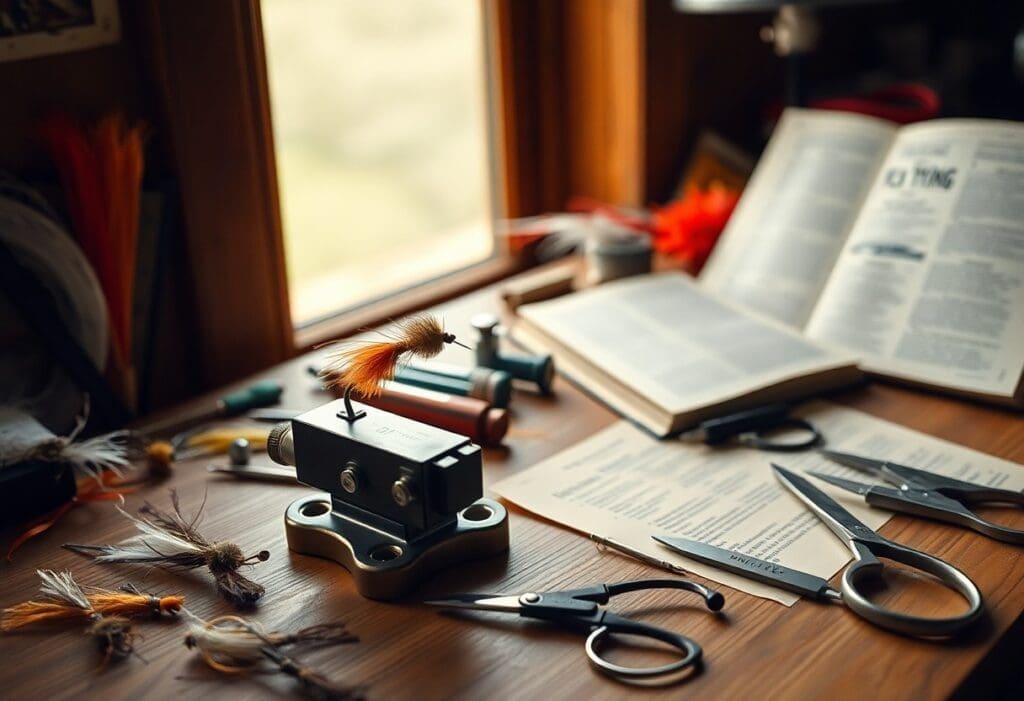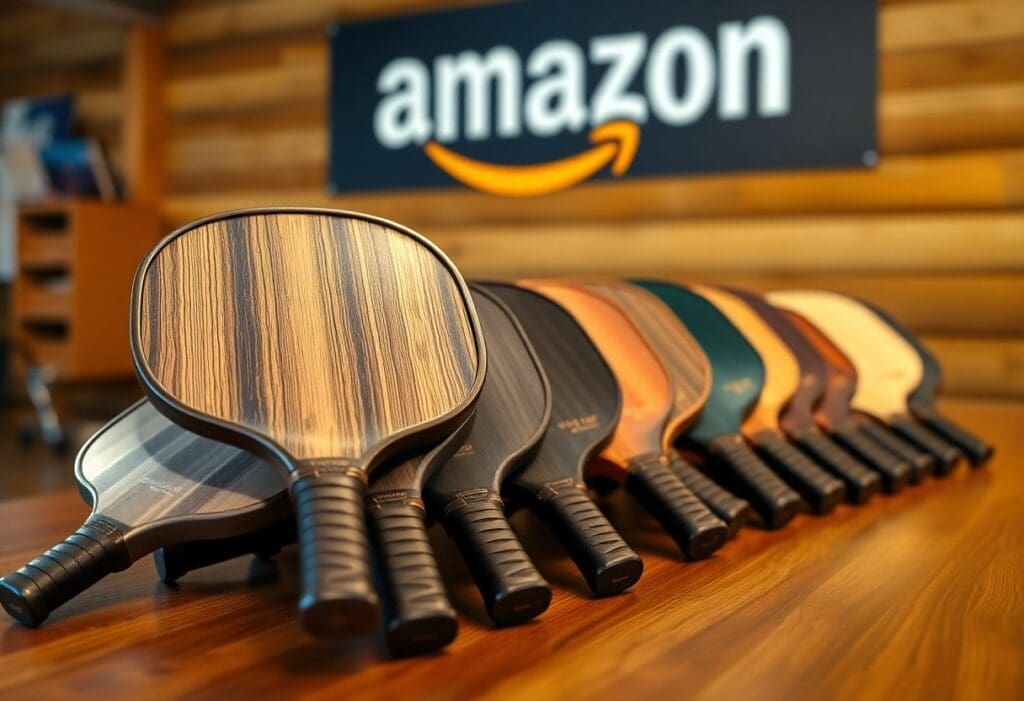Fly tying serves as a canvas for your creativity in fly fishing.
Each fly you create can mimic the local insect life, match the conditions of your fishing environment, or even entice fish with innovative designs that have yet to be widely used.
You might find that a unique color scheme or an intricate body design can be the difference between a successful day on the water and an empty net.
By crafting your own flies, you will be able to experiment, learn, and refine your skills. This, in turn, will lead to a deeper understanding of the fish you are targeting.
A Personalized Approach
One of the standout benefits of fly tying is the ability to customize flies according to the species you wish to catch, as well as the specific waters you are fishing.
For instance, if you are targeting brown trout in a local stream during hatch season, you can boost your chances for success by tying your own version of an effective pattern such as a Hare’s Ear Nymph or a Comparadun.
Local guides and seasoned anglers often emphasize the significance of matching the hatch.
When you have the ability to tie what is currently available, you’ll be able to greatly enhance your fly fishing experience.
Cost-Effective Fishing
Building your own flies may appear to require an initial investment in materials and tools, but over time, the returns can be substantial.
A single fly can cost anywhere from a few dollars to upwards of ten dollars at a retail shop.
When you tie your own flies, you can produce them at a fraction of that cost.
By purchasing materials in bulk and reusing certain elements, savings can quickly accumulate.
Consider your most frequently fished flies. With a bit of practice, you can replicate them for just a fraction of the price, making your angling adventures more economical.
Enhancing Skills and Knowledge
The process of tying flies is a gateway to a deeper understanding of entomology and aquatic ecosystems.
You’ll broaden your fishing acumen when you learn about various species of insects, their life cycles, and how they relate to fish behavior.
Each time you sit down to tie a fly, you are also choosing to invest in your education as an angler.
You will discover that perhaps the best way to improve your success rate on the water is to understand the environment where the fish live and feed.
A Community of Passion
Fly tying opens doors to connect with a vibrant community of fellow enthusiasts.
Workshops, online forums, and local clubs stand as invaluable platforms for learning and sharing techniques.
These networks not only provide guidance on improving your fly tying skills but also foster a sense of camaraderie among fellow anglers who share your passion.
Events such as “fly swaps” provide an opportunity for you to exchange your custom creations while collecting new designs.
As you immerse yourself in the world of fly tying, you’ll appreciate how deeply it intertwines with fly fishing.
The journey toward mastering this craft will undoubtedly enhance your overall enjoyment and success in the sport.
Essential Gear: Building Your Fly Tying Toolkit
Must-Have Tools for Every Tyer
Your fly tying toolkit should begin with some basic tools.
- A sturdy vice holds your hook steadily while you work
- A bobbin keeps your thread organized
- Scissors, particularly those with fine points, allow for precision cutting
Additionally, you’ll find whip finishers, hackle pliers, and hair stackers to aid in perfecting your flies.
Don’t overlook a good light source, as it makes a significant difference in detailing your work.
Selecting Quality Materials: Feathers, Furs, and Threads
The materials you choose can elevate your flies from basic to exceptional.
High-quality feathers, furs, and threads are components that contribute to the realism and effectiveness of your creations.
Often, premium materials not only improve the appearance, but also enhance the durability and performance of the flies you tie.
Feathers can vary significantly in texture and color. Natural materials typically provide that lifelike action in the water that fish are drawn to.
Fur, sourced from various animal pelts such as deer and rabbit, can create body profiles and movement that mimic live prey.
When dicking out threads, opt for those designed for fly tying. Polyester or nylon threads are generally stronger and serve as a reliable foundation for your patterns.
Invest time in sourcing quality materials. This will reward you with flies that stand out and help you fish successfully.
Budgeting for Your Fly Tying Setup
Look for kits that offer a good balance of quality and price, especially if you’re just starting.
Many retailers provide all-in-one fly tying kits that include basic tools and a selection of materials, which can be a cost-effective solution.
As you gain experience, gradually invest in specialty items that enhance your tying technique and elevate your patterns.
This is how you can ensure that you can customize your setup to reflect your unique style without breaking the bank.
The Art of the Pattern: Fundamental Fly Designs You Need to Know
Top 5 Beginner Flies and Their Applications
Getting started in fly tying is much simpler when you focus on a few staple patterns.
The Adams, Woolly Bugger, Elk Hair Caddis, Pheasant Tail Nymph, and Clouser Minnow are your go-tos.
These designs are versatile and effective for various species, covering topwater, subsurface, and stream fishing.
As you master these flies, you’ll build confidence in your ability to adapt and experiment with variations that suit your local waters.
The Anatomy of Fly Patterns: Hooks, Bodies, and Wings
Each fly typically features three main components: the hook, body, and wings, each serving a specific purpose.
The hook acts as the foundation, providing a secure point for striking fish.
The body, crafted from materials like fur or synthetic fibers, mimics the appearance and movement of prey, while the wings help in floatation and adding visual appeal.
Your choice of hook will affect the overall effectiveness of your fly. Different sizes and shapes cater to various fish species and conditions.
Bodies may vary significantly in materials and thickness, affecting how the fly sinks or floats.
Wings, whether made from feathers or synthetic materials, can enhance lifelike movement while aiding visibility.
By mastering these elements, you’ll ensure that your flies not only look good but are also functional on the water.
Adapting Patterns for Different Environments
Environmental factors heavily influence the design and selection of effective fly patterns.
Stream flow, water temperature, and the presence of specific insect hatches will guide your adjustments.
A fly that works well in a swift, cold river may not be as suitable for still, warm ponds.
To adapt your fly patterns to specific environments, you’ll need to modify the colors, sizes, and materials.
For instance, darker colors are often more effective in stained waters, while brighter hues can attract fish in clear conditions.
Additionally, adjust the sizing of your flies based on the prevalent food sources in a particular body of water. This will increase your chances of enticing a catch.
By observing the local fishing conditions, you can fine-tune your tied flies for optimal performance.
Mastering Techniques: Tying Skills Every Beginner Should Practice
Basic Knots and Their Importance

An understanding of basic knots is important for any fly tier.
These knots not only secure your materials but also provide the foundation for robust fly patterns.
Simple knots like the clove hitch and the improved clinch knot will keep your components firmly in place, ultimately enhancing your fishing success.
Learning to Control Thread Tension
Proper thread tension is key to achieving a clean and professional-looking fly.
Whether you’re wrapping materials or creating body segments, maintaining consistent tension will ensure your fly holds together when it hits the water.
Start by practicing with minimal materials to get a feel for how tight or loose your thread should be.
To master thread tension, practice wrapping thread around a hook shank without any additional materials.
Focus on creating even spacing and consistent wraps.
A good rule of thumb is that your thread should neither be so tight that it cuts into the material nor so loose that it shifts during the tying process.
Ideally, you’ll want to achieve a snug, but not overly constrained, wrap that lays flat against the hook.
This skill comes with patience and deliberate practice, so don’t be discouraged if it takes time to perfect.
Advanced Techniques: Adding Texture and Color
Elevate your fly tying by incorporating texture and color into your patterns.
These elements can enhance the visibility and realism of your flies, making them more appealing to fish.
Techniques such as using dubbing for texture or adding a flash to simulate scales can make your fly stand out.
Adding Texture and Color Techniques
| Technique | Description |
| Dubbing | Applying fibers around the hook to create a natural look. |
| Palmering | Wrapping hackle or other materials around the body of the fly for added texture. |
| Color Blending | Mixing various colored materials to achieve a more realistic appearance. |
| Flash Materials | Using iridescent or reflective materials to create sparkle. |
Focus on layering different materials to create depth and intrigue.
Experiment with various combinations of natural and synthetic fibers to find what works best for you.
Mixing colors might involve blending several shades of dubbing or using multiple strands of flash to create a unique look.
This practice allows your creative side to shine while also enhancing the chances of catching fish, because many species are attracted to visually stimulating patterns.
- Experiment with color combinations on sample flies
- Try different textures to see how fish respond
- Incorporate flash materials selectively for an added bonus
Navigating Resources: Where to Learn and Find Inspiration
Online Tutorials and Video Resources
You can find a treasure trove of online tutorials and video resources dedicated to fly tying.
Platforms like YouTube host numerous channels run by experienced fly tyers who share their knowledge and demonstrate various techniques.
These visual guides make it easy for you to grasp complex tying methods and follow along at your own pace, enhancing your skills and confidence.
Recommended Books and Magazines for Fly Tyers
Look for comprehensive guides like “The Complete Book of Fly Tying” by Eric Leiser or magazines such as “Fly Tyer” and “Field & Stream.”
These resources provide you with patterns, tips, and the latest trends in the fly tying community.
Books often feature step-by-step instructions, illustrations, and personal anecdotes that enrich your knowledge of the art and science behind fly tying.
Magazines showcase new techniques, feature profiles of successful tyers, and provide valuable insights into seasonal patterns.
With a mix of foundational knowledge and fresh ideas, these resources will keep you inspired and informed as you develop your skills.
Local Groups and Fly Tying Clubs
Local groups and fly tying clubs can provide a sense of community and camaraderie.
You’ll have the chance to meet fellow enthusiasts who can offer tips, support, and shared experiences.
Many clubs host events, workshops, and social gatherings that allow you to practice your tying skills alongside others.
A local fly tying club can immerse you in a supportive environment where you can learn directly from more experienced members.
These clubs often organize fishing trips, further enhancing your networking opportunities and allowing you to see the practical applications of your skills.
The shared passion for the craft can spark creativity and motivate you to push your abilities further, transforming your fly tying experience into a fulfilling hobby.
The Fly Fisherman’s Perspective: How Tied Flies Impact Your Success
Matching the Hatch: The Science of Effective Fishing
Successful fly fishing heavily relies on matching the hatch, a.k.a. understanding which insects or food sources are currently active in the water.
By observing the local ecosystem, you can create flies that replicate these natural offerings, enhancing your chances of enticing fish.
Attention to detail in size, color, and movement can make all the difference on those vital fishing days.
Seasonal Considerations for Fly Selection
The changing seasons dictate the types of insects available and influence fish behavior. You should invest careful consideration into your fly selection.
In spring, for instance, rising water temperatures trigger hatches of mayflies and caddisflies, while summer often calls for terrestrials, such as ants and grasshoppers.
Each season unveils different fishing opportunities.
During the fall, fish begin to feed aggressively in preparation for winter, making this an excellent time to use larger streamers or egg patterns.
Winter conditions prompt fish to slow down, resulting in more opportunities to catch them with small, subtle flies.
When you’re aware of seasonal changes, you can stay one step ahead and optimize your approach with the right fly patterns tailored to the time of year.
Insights from Experienced Anglers
Many seasoned anglers will emphasize the value of observing not just the water itself but also the surrounding environment.
This includes understanding weather patterns, water levels, and fish behavior, all of which influence your fly’s effectiveness.
Veteran anglers often advocate for keeping a journal to track successful patterns, locations, and conditions.
This practice allows you to refine your fly choice over time, building a personal database of knowledge.
Many also recommend engaging with local fishing communities or forums to gather insights, share experiences, and stay updated on current hatches.
This can create a sense of camaraderie while enhancing your skills as you commence on your fly-tying journey.
Troubleshooting Your Ties: Common Mistakes and Fixes
Identifying Flies That Don’t Work
Not every fly you tie will perform as intended.
Flies that are too heavy or improperly weighted can sink too quickly or not at all, making them ineffective in various fishing scenarios.
Additionally, flies with incorrect color patterns or unrealistic proportions often fail to attract fish.
Regularly assess your catch rate with each pattern. This can help you determine which designs might need to be modified or retired from your box.
Repairing and Modifying Flies
When you find a fly that’s not performing, consider repairing or modifying it before discarding it.
A quick fix to a damaged fly could be something like adding more dubbing or adjusting the tail length to better mimic your target species.
Sometimes, you might be able to enhance a fly’s appeal by applying some markers or adjusting materials to alter the color scheme.
For instance, if a fly’s hackle is frayed or misshapen, gently re-tie it or replace it with a new feather in the desired color to restore its effectiveness.
If you find that a particular pattern isn’t yielding results, experiment with color changes or slight size adjustments.
Consider keeping a notebook or a digital log of these changes. This can facilitate a personalized approach that builds your understanding of local fish preferences over time.
Learning from Failed Attempts
Every fly that doesn’t catch fish is an opportunity to improve your skills.
Analyze why specific patterns didn’t work, whether it was the tying technique, color, or presentation.
Local fishing communities or online forums can provide insight into common local failures which can help you make more informed choices in your fly tying.
By reviewing your unsuccessful attempts, you can increase your understanding of what works and what doesn’t.
Make notes on the water conditions, fly presentation, and any adjustments you’ve made.
This practice helps you develop a strategy that leads to more successful outings, ensuring that with each failed fly, you’re one step closer to mastering the art of fly tying for fishing.
Ultimately, persistence and experimentation are key in honing your craft.
The Sustainable Fly Tyers: Eco-Friendly Practices
Sourcing Sustainable Materials
I highly recommend that you prioritize eco-friendly options for your fly-tying materials.
Look for natural fibers, recycled plastics, and sustainably harvested feathers to minimize your environmental footprint.
Many suppliers now cater to environmentally conscious fly tyers, offering products that support ethical practices.
This is how you can ensure that your craft doesn’t contribute to over-exploitation of wildlife or ecosystems.
The Impact of Fly Tying on Wildlife and Habitats
Your choice of materials can affect local populations of fish and the overall health of aquatic ecosystems.
By opting for sustainable materials, you help alleviate pressure on wildlife that might otherwise be overharvested for the sake of fly tying.
The decision to use specific materials in fly tying can impact wildlife and habitats in numerous ways.
For example, when you use feathers from birds sourced through responsible channels, you can help protect avian populations from decline and ensure that natural ecosystems remain balanced.
Many fly tyers now consciously choose synthetic alternatives to natural materials when available. This helps to reduce the demand on wildlife resources while still allowing for effective and diverse fly patterns.
Minimizing Waste in Your Fly Tying Practices
By using every bit of material you have, including scraps and leftovers, you can create multiple flies and minimize your overall waste.
Set up a reuse system for materials. This will help encourage a more eco-friendly approach and inspire creativity in your fly designs.
Organize materials in a way that allows you to easily access scraps. This way, you can experiment with new patterns and styles without needing to buy more supplies.
By combining various remnants, you can create unique flies that not only perform, but also exemplify your commitment to sustainability in fly tying.
Next-Level Creativity: Innovating Your Unique Patterns
Blending Traditional Techniques with Modern Ideas
Your creativity in fly tying can reach new heights by merging traditional techniques with contemporary innovations.
Explore age-old patterns, then reimagine them using new materials like synthetic threads and unique beads.
For example, updating a classic Woolly Bugger with fluorescent elements or unconventional materials can yield an enticing fly that fish have never seen before.
Experimenting with Personal Styles and Designs
Use your favorite colors and textures to create patterns that resonate with your artistic sensibilities.
Don’t hesitate to add unconventional elements like feathers from birds not typically found in your area. This will transform standard flies into compelling representations of local insects or baitfish.
And never be afraid to experiment. Set aside time to sketch out ideas and let your imagination run free.
You might blend elements of a popper with the body of a nymph, resulting in a fly that stands out while serving multiple purposes.
Unique combinations allow for more creativity and could lead to you discovering new effective patterns tailored to your local waters and conditions.
Keep records of what works and what doesn’t, reflecting your fly-tying journey and facilitating growth.
Sharing Your Creations with the Fishing Community
By sharing your creations, you’ll not only inspire others but also cultivate valuable connections within the fishing community.
Joining online groups, hosting local tying sessions, or entering contests provide opportunities to identify trends and receive constructive critiques.
The support and encouragement will not only motivate you to innovate further but may even lead to collaborations that enrich your fly-tying experience and broaden your skill set.
Final Words
On the whole, fly tying for fly fishing is a rewarding journey that enhances your angling experience.
By gathering the right tools, selecting quality materials, and practicing the techniques, you will build your skills and create customized flies that attract fish in your local waters.
Engage with online resources and local fly-fishing communities to share tips and gain inspiration.
With dedication and patience, you will not only improve your fly fishing, but also develop a deeper appreciation for the craft of fly tying.



